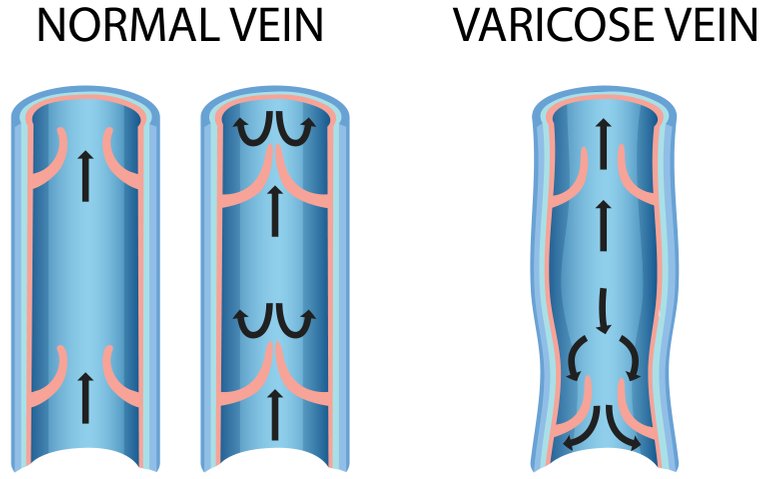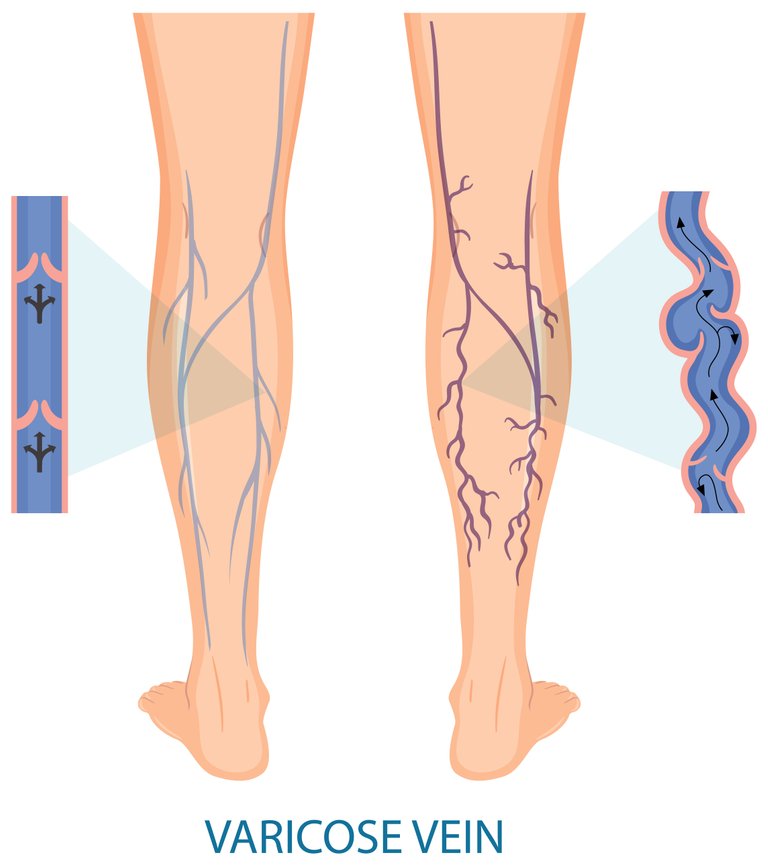Introduction

We've come to a point in our lives to either see or experience varicose veins, especially if our lifestyle forces prolonged standing on us. It's very popular in legs, mainly where they appear as purple or blue veins, and they aren't really good-looking that's why many people seek cosmetic treatment, especially if they have to wear anything short that makes those veins noticeable. Yet, varicose veins appear in a variety of areas, and they can be painful, so we will go over this in this post and talk more clearly about varicose veins.
What are varicose veins
Varicose veins are enlarged, congested, superficial, and maybe painful maybe not veins that may appear in various parts of the body including legs, lower GI, lower rectum (Hemorrhoids), and around belly button.
But what are the risk factors for the appearance of varicose veins?
Females have higher risk to develop varicose veins than men, which is something we need to consider when we are talking about the risk factors. Prolonged standing/sitting periods is also one of the major risk factors. Other risk factors include:

- Age: While we are getting older, our veins valves and walls will be getting weaker and so backflow of blood will lead to congestion that leads to varicose veins.
- Overweight: Being overweight greatly increases the chance of developing varicose veins.
- Family history.
- Pregnancy.
Causation
Now that we talked about risk factors, I gave a glance on what causes varicose veins when I talked about age, and now I will further explain it.
Varicose veins are caused by the backflow of blood due to weakening of the vein valves which are responsible for forcing the blood in one way movement, which is towards the heart. When those valves become weak, the blood will flow backwards, and it will congest in the veins, leading to their enlargement. Therefore, veins will be obvious with blue/purple color.
Symptoms & Complications

While varicose veins are usually painless, they might become very painful and bring another complications aside from pain, including:
- lower extremity stasis, congestion, edema.
- Stasis dermatitis and ulcerations, and that's when it starts to get a little worrying since it's painful.
- Bleeding: Since those veins are superficial, then they are susceptible to bleeding.
- Embolism: (That's when it gets scary) Despite that it's very rare, its occurrence is the most dangerous. It's known to be the most important complication, and it occurs in the deep veins of the leg, particularly the great saphenous vein.
Sites where varicose veins also appear
Varicose veins aren't exclusive for the legs, they have other sites of the body where they might be present, those sites include:
Esophageal varices, it presents in the lower GI.
Hemorrhoids, and can't tell you how suffering it will be for people who have it, it will just ruin their everyday activity. Hemorrhoids are located in the lower rectum, and they have high bleeding tendency.
Other sites such as abdomen near the belly button, and veins that drains from the scrotum and this area is terrifying as it happens in males and leads to infertility!
All the following reasons occur due to portal hypertension.
Prevention
For me, I always believe that avoiding risk factors is better than waiting for the time we have such disease and start treatment course. When it's about prevention of varicose veins, we should improve the muscle tone and prevent the prolonged standing or sitting periods without movement, also exercising and healthy eating is always the key to prevent most disease including varicose veins.
I would love to end the post here, so stay safe everyone and consider this as your reminder to improve your lifestyle. Stay safe and until next time.
References:
Overview
Symptoms and risk factors #1
Symptoms #2
Sites of varicose veins
Prevention

